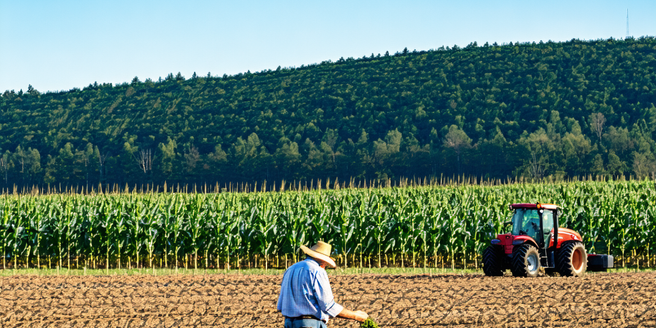
Understanding Weather Patterns and Their Impact on Crops
Weather patterns have a significant impact on agricultural productivity. Understanding these patterns helps farmers plan when to plant and harvest crops to maximize yield. Various weather conditions such as rainfall, temperature, and wind speed can affect crop growth differently. For instance, consistent sunlight and moderate temperatures generally promote growth, while extreme temperatures can lead to crop stress. By analyzing historical weather data and trends, farmers can predict potential threats and tailor their farming practices accordingly. Understanding microclimates, which may differ even within small geographical areas, is crucial as well, allowing for localized adjustments in farming techniques. Farmers leverage meteorological insights to make informed decisions, which can lead to more sustainable and productive agricultural practices.
The Role of Technology in Modern Weather Forecasting
Technology plays a pivotal role in advancing modern weather forecasting, offering farmers valuable tools to anticipate and adapt to changing weather patterns. Innovations such as satellite imagery, advanced radar systems, and complex algorithms enhance the precision and reliability of forecasts. These tools provide real-time data, enabling farmers to receive timely and accurate weather predictions. Mobile applications and digital platforms offer accessible and contextualized weather information, tailored to specific agricultural needs. By harnessing technology, farmers can optimize irrigation schedules, manage pest control, and reduce resource wastage, ultimately fostering resilience against climate variability. Additionally, technology facilitates the modeling of future weather scenarios, empowering farmers with foresight to implement preventative measures, ensuring sustainability and improved agricultural outcomes.
Strategies for Farmers to Adapt to Climate Variability
Adapting to climate variability is critical for safeguarding agricultural productivity. Diversification of crops enhances resilience, as farmers cultivate a mix of varieties that can withstand different weather conditions. Implementing innovative irrigation systems can mitigate the effects of irregular rainfall, ensuring efficient water use. Conservation agriculture techniques, like no-till farming, enhance soil health and retain moisture, crucial under erratic weather patterns. Incorporating agroforestry—integrating trees within farming systems—can provide windbreaks and maintain ecosystem balance. Farmers can also employ climate-resilient seed types, developed through research for better resistance to heat and drought. Furthermore, participating in agricultural cooperatives provides access to shared knowledge and resources, facilitating collective adaptation strategies. Through these efforts, farmers can build robust farming systems capable of enduring the challenges posed by climate variability.
Economic Implications of Weather-Related Agricultural Changes
Weather-related changes in agriculture bear significant economic implications. Unpredictable weather patterns can result in crop failures, leading to financial losses for farmers and increased food prices. These fluctuations can disrupt supply chains, affecting the overall stability of the agricultural market. Insurance schemes tailored to weather risks can bolster economic resilience, providing farmers with financial security against adverse weather impacts. By investing in weather prediction technologies, farmers can minimize potential economic losses through informed decision-making. Furthermore, government policies and subsidies can support farmers in adapting to weather-induced challenges, ensuring the sustainability of their livelihoods. Understanding these economic dynamics enables stakeholders to develop effective strategies that mitigate the financial risks associated with weather variability, ensuring a stable and prosperous agricultural sector.
Future Trends: Predicting Weather and Agricultural Outcomes
Predicting weather and agricultural outcomes is evolving rapidly, driven by technological advancements and data analytics. The integration of artificial intelligence and machine learning in meteorology is revolutionizing prediction accuracy, offering more reliable forecasts. Big data analytics allows for the synthesis of vast meteorological data, providing insights into long-term weather trends and patterns. Precision agriculture capitalizes on these predictive tools, optimizing crop management and resource allocation. IoT devices facilitate real-time monitoring of climatic conditions, enabling data-driven decisions to enhance productivity and reduce risks. Additionally, collaborative global efforts in climate research contribute to understanding and predicting agricultural outcomes with greater accuracy. These future trends not only promise increased efficiency in agricultural practices but also pave the way for a more resilient food production system in the face of climate change.
